High prevalence of hepatitis B infections in Burkina Faso (1996-2017): a systematic review with meta-analysis of epidemiological studies
- PMID: 29699534
- PMCID: PMC5921387
- DOI: 10.1186/s12889-018-5432-7
High prevalence of hepatitis B infections in Burkina Faso (1996-2017): a systematic review with meta-analysis of epidemiological studies
Abstract
Background: Hepatitis B virus (HBV) infection was long considered an important public health concern in Burkina Faso and still represents a major cause of liver cancer and cirrhosis in the active population. To counter the problem, a national strategic plan was developed and adopted in July 2017 to coordinate viral hepatitis elimination's efforts. However evidence to support its implementation remains scanty and scattered. The main purpose of this study was to summarize available information from per-reviewed articles published over the last two decades to accurately estimate the prevalence of HBV infection in Burkina Faso.
Methods: We conducted a systematic search with meta-analysis of scientific articles using Science-Direct, Web-of-Science, PubMed/Medline, and Google Scholar. We systematically assessed all relevant publications that measured the prevalence of hepatitis B surface antigen and which were published between 1996 and 2017. We estimated the national HBV prevalence and its 95% confident interval. We subsequently adjusted the meta-analysis to possible sources of heterogeneity.
Results: We retrieved and analyzed a total of 22 full text papers including 99,672 participants. The overall prevalence was 11.21%. The prevalence after adjustment were 9.41%, 11.11%, 11.73% and 12.61% in the general population, pregnant women, blood donors and HIV-positive persons respectively. The prevalence was higher before implementation of HBV universal vaccination and decreased from 12.80% between 1996 and 2001 to 11.11% between 2012 and 2017. The prevalence was also higher in rural area 17.35% than urban area 11.11%. The western regions were more affected with 12.69% than the central regions 10.57%. The prevalence was 14.66% in the boucle of Mouhoun region and 14.59 in the center-west region. Aggregate data were not available for the other regions.
Conclusions: HBV has clearly an important burden in Burkina Faso as described by its high prevalence and this problem significantly challenges the national health care system. There is an urgent need for effective public health interventions to eliminate the problem. However, higher quality data are needed to produce reliable epidemiological estimates that will guide control efforts towards the achievement of the national strategic plan's goals.
Keywords: Burkina Faso; Epidemiology; Hepatitis B; Meta-analysis; Viral infection.
Conflict of interest statement
Ethics approval and consent to participate
Not applicable.
Competing interests
The authors declare that they have no competing interests.
Publisher’s Note
Springer Nature remains neutral with regard to jurisdictional claims in published maps and institutional affiliations.
Figures
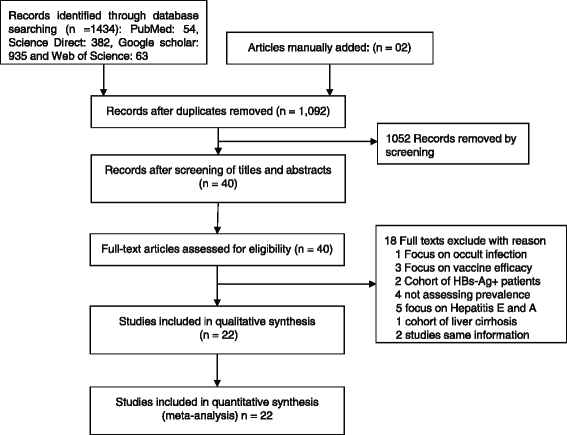
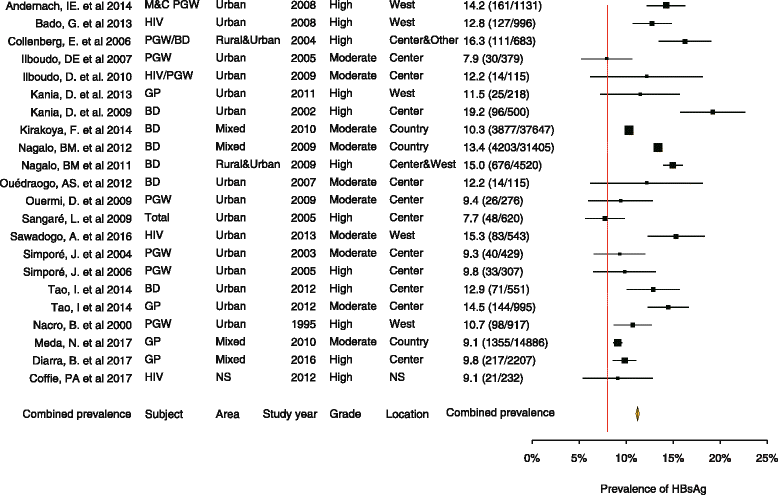
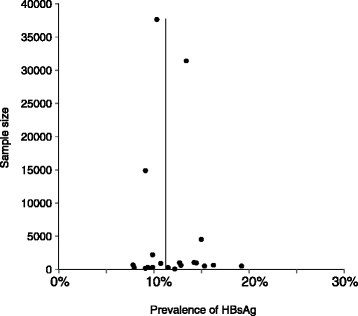
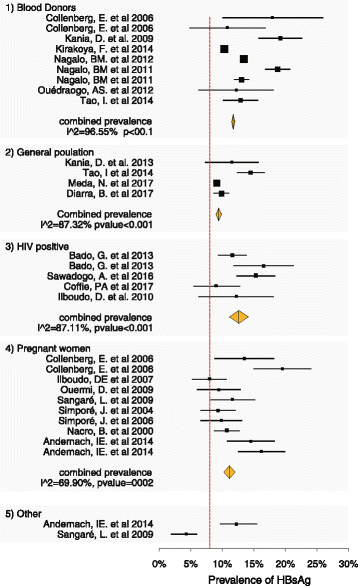
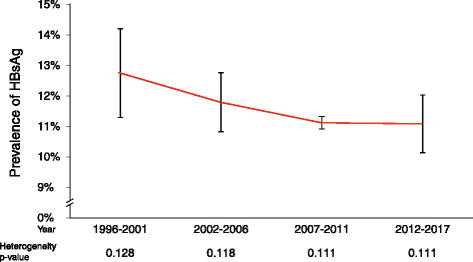
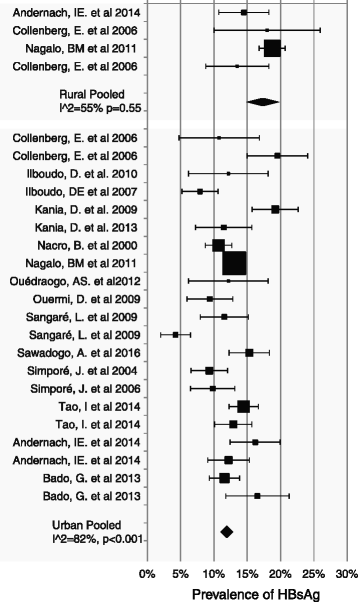
References
-
- Schweitzer A, Horn J, Mikolajczyk RT, Krause G, Ott JJ. Estimations of worldwide prevalence of chronic hepatitis B virus infection: a systematic review of data published between 1965 and 2013. Lancet. 2015;6736(15):1–10. - PubMed
-
- WHO. Hepatitis B fact sheet updated: World Health Organization; 2017. Available from: http://www.who.int/mediacentre/factsheets/fs204/en/. Accessed 11 Aug 2017.
-
- Forouzanfar MH, Afshin A, Alexander LT, Biryukov S, Brauer M, Cercy K, et al. Global, regional, and national comparative risk assessment of 79 behavioural, environmental and occupational, and metabolic risks or clusters of risks, 1990–2015: a systematic analysis for the global burden of disease study 2015. Lancet. 2016;388:1659–1724. doi: 10.1016/S0140-6736(16)31679-8. - DOI - PMC - PubMed
Publication types
MeSH terms
LinkOut - more resources
Full Text Sources
Other Literature Sources
Medical

